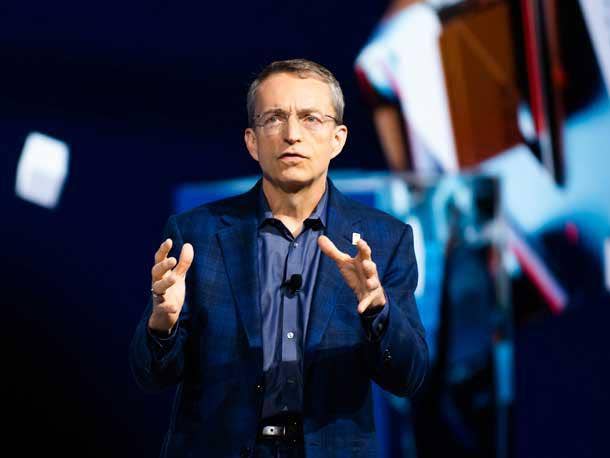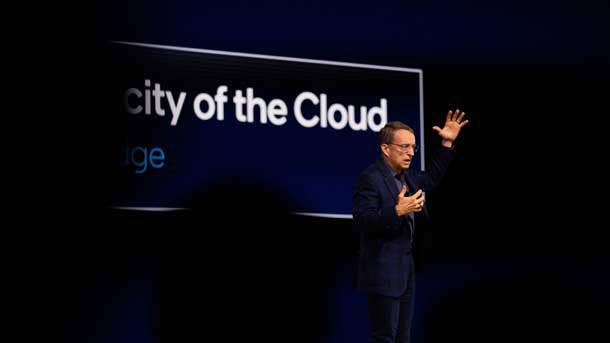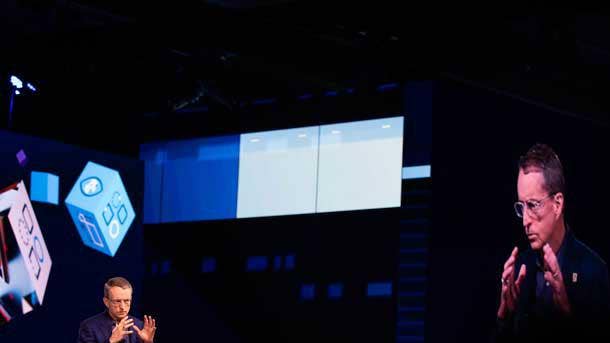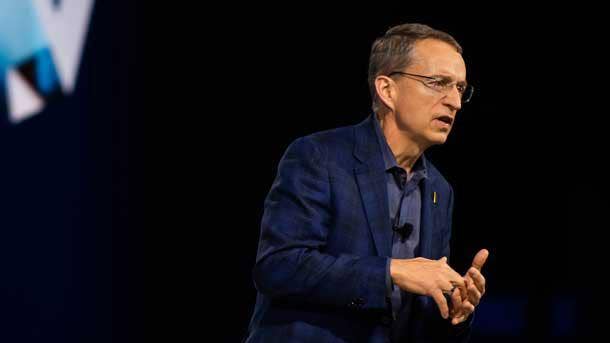Intel CEO Gelsinger At Vision: Here Are The Four ‘Superpowers’ That Spur Innovation
‘Each of these superpowers is impressive on its own, but when they come together, that’s magic. If you’re not applying AI to every one of your business processes, you’re falling behind,’ Intel CEO Pat Gelsinger tells the audience at the company’s Vision 2022 event.

Intel is gearing up for its future in the booming market for artificial intelligence, edge and the cloud, and much of CEO Pat Gelsinger’s keynote at the company’s Vision 2022 event focused on how the company would leverage emerging technologies.
Vision 2022, being held in Dallas at the Gaylord Texan Resort and Convention Center this week, is the first in-person event from Intel in more than two years. The event was also live-cast, but thousands showed up in person to hear Gelsinger’s take on the future of the company.
Gelsinger laid out Intel’s vision for addressing the changing needs of workers globally as they shift to a hybrid/remote method. “All of us are adapting to this new environment, what the future of work is as we return to work. And as we figure out how we can continue to have access to the services and data, we’re seeing this insatiable demand for compute and this increasing drive to deploy that at the intelligent edge and taking advantage of AI inference solutions.”
Rene LaVigne, president and CEO of Herndon, Va.-based Intel partner Iron Bow Technologies, said he was looking forward to the keynote and to networking at the event.
“I really like to hear from Pat [Gelsinger] and his keynote, what his thoughts are and where he’s heading,” Lavigne said. “And I think we’ve seen a pretty dramatic change in Intel employees’ enthusiasm. Morale is certainly elevated—I’ve been working with Intel in the channel capacity for a lot of years and never have they seemed so energized and enthused and excited. It’s great to see.”
Here’s what Gelsinger had to say in his keynote as he kicked off the two-day Vision event.

The Four Superpowers
In the comic book movies, a team of superheroes will band together to save the day. In Gelsinger’s vision of Intel’s future, there are four superpowers that spur innovation: pervasive connectivity, ubiquitous compute, AI and cloud-to-edge infrastructure. In one way or another, each of the speakers who came on stage during Gelsinger’s keynote circled back to the concept.
“Each of these superpowers is impressive on its own, but when they come together, that’s magic. If you’re not applying AI to every one of your business processes, you’re falling behind. We’re seeing this across every industry,” he said.
“Everything has become a computer. … But now it’s in our smartphones or tablets, our wearables, the devices. … Everything we touch is becoming a computer. Computing is now how we experience the world. But behind that ubiquitous infrastructure—I call this ‘cloud edge and the cloud’ now—you and I can have high-performance computing immediately at our disposal. And with the unlimited reach of the intelligent edge, we can have low-latency, high-bandwidth, real-time inference capabilities anywhere we want them.”

Mobile 5G And Keeping the Lights On
At one moment in the keynote, the impressive lighting of the stage production suddenly shut down for a few moments to demonstrate how quickly our world can shut down. Gelsinger talked about Intel’s partnerships globally to keep everyone connected no matter what is happening in their environment.
Gelsinger talked about Intel’s partnership with Taiwan’s Pegatron and how it was producing 5G networking that could be deployed in extreme conditions. “Think of it … earthquakes, tornadoes, natural disasters, where the communications infrastructure is knocked out. And imagine that you were a first responder. You’re showing up for a disaster relief situation and you have no communications.”
Gelsinger also sees future business applications beyond disaster response.
“We’re taking advantage of the advances in 5G availability of wireless spectrum. … And you can think about this as a blueprint for next-generation, commercial 5G, the ramp deployments. And this could be an NGO [non-governmental organization], or a variety of different business settings that were set up for smart factory environments or smart city environments.”

Supply Chain Issues
Supply constraints brought on by COVID-19 and stubbornly causing disruptions even now have impacted technology in many ways.
“In the long term, our mission is to make sure we’re not limiting the growth of our customers by lack of our capacity,” Gelsinger said. As we previously announced, we are investing significantly and expanding our manufacturing capabilities both in the U.S. and Europe. … This holistic investment strategy is to drive innovation and create a world-class supply chain ecosystem. … Together with our ecosystem partners, we will build a flexible, resilient industry that provides opportunity for customers to pursue their business strategies.”
The Digital Renaissance
Gelsinger talked about the need to partner across industries to face growing challenges in the world.
“I believe we’re sitting at this precipice of the digital renaissance where we’re challenging the complexities of tomorrow, and how we’re interconnected and how we rely on leading-edge technologies. But we also need to partner across industries, borders and disciplines. And we’ve seen through the supply chain disruptions just how intertwined our environment is and how important it is for us to collaborate in new and effective ways. And we’re seeing this piece of technology adoption increase every day.”
Inflection Point
Gelsinger offered a point that could serve as both a message of hope and a warning. “The world is at a strategic inflection point—a moment in time where things can go incredibly well or incredibly poorly,” he said. “Transformation is inevitable; it applies to all,” he said.